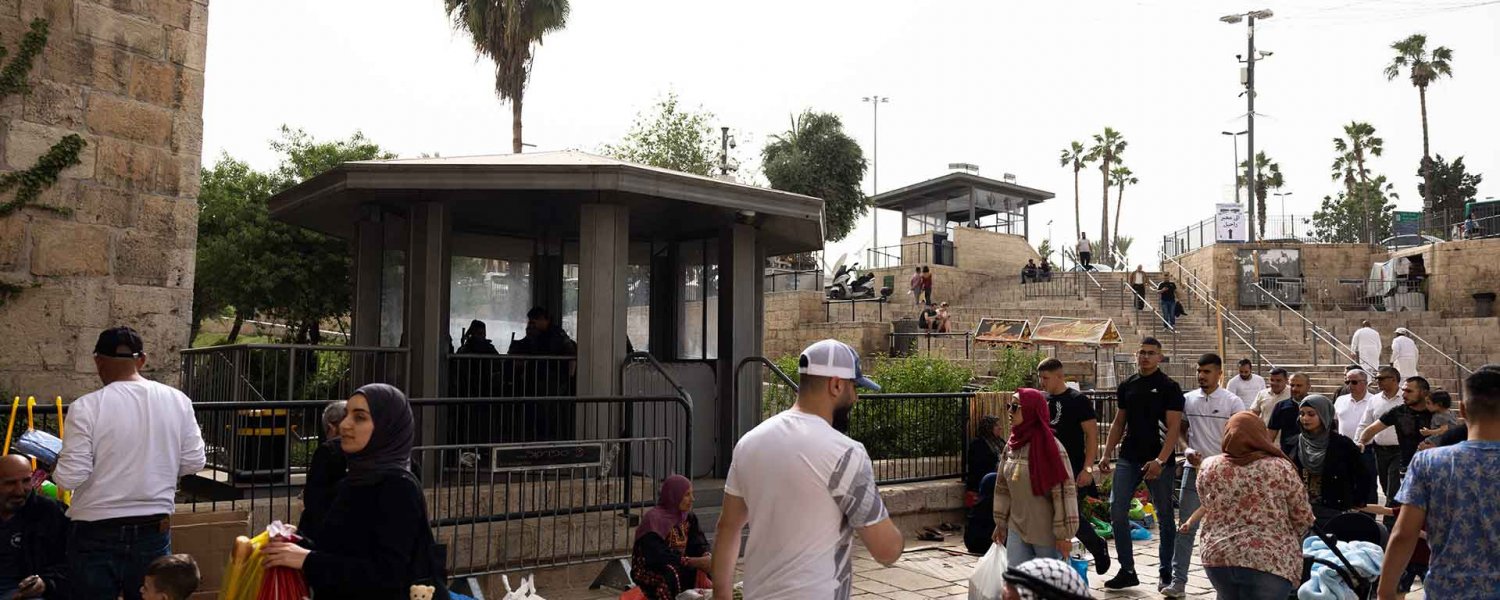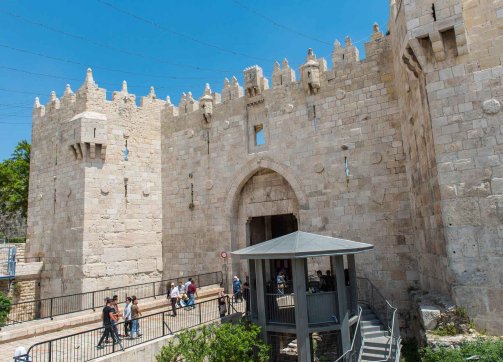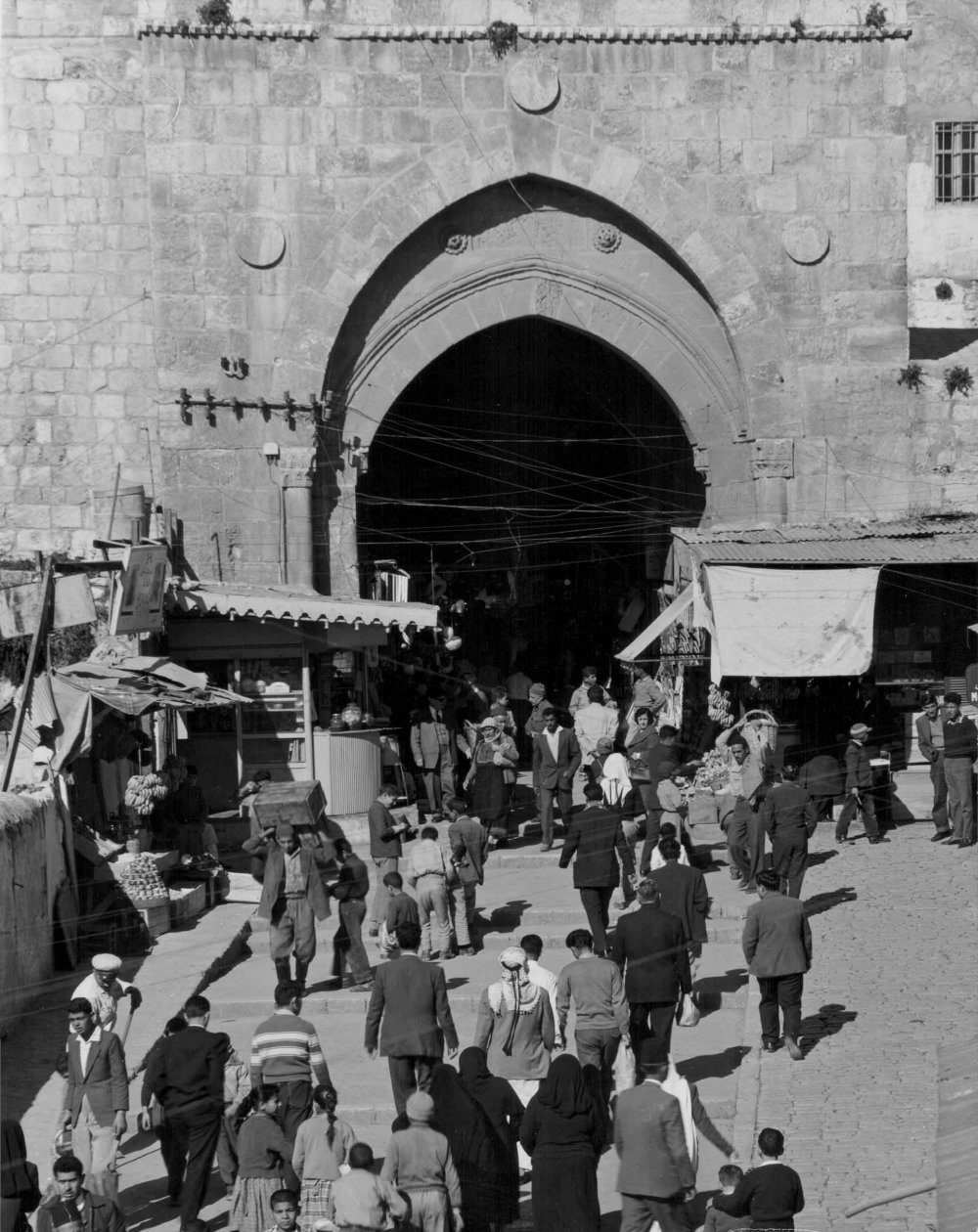Hajj Abu Masoud, 78, who hails from Haret al-Sa‘diyya, spoke bitterly as he leaned on his walking stick. “I would sit at the gate near the famous newspaper salesperson Ibrahim Shabaneh, who was often referred to as the ‘guardian of Damascus Gate’; he used to distribute newspapers for free to young men and women whom he saw had a passion for reading and whose literary and journalistic skills he wanted to encourage,” Abu Masoud said.2
Abu Masoud also recalled the Nigerian peanut saleswoman who was often next to farmers selling mint, sage, figs, grapes, and the latest produce. “These women dressed in their authentic folkloric outfits would come from the nearby villages with the latest produce of the land.”
Abu Masoud remained silent for a minute as he saw Israeli soldiers searching the pockets of a young man. “Now what I see at Damascus Gate are well-armed Israeli soldiers enjoying terrorizing and insulting a young person for no other reason than he is Arab, and me, an older man who has been prevented from sitting near the gate to catch my breath,” he said. “Instead, they put metal dividers at the location where older people used to be able to rest.”
Abu Masoud reflected on the importance and ambiance of Damascus Gate during Jordanian times when Jordan was in control of East Jerusalem between 1948 and 1967. “It was a pleasure to go through it and discover a new world inside; it was a mix of people and cars all moving naturally and not like it is now where people move out of fear and concern,” he said. “This is the way I feel every time I go through Bab al-Amud.”






